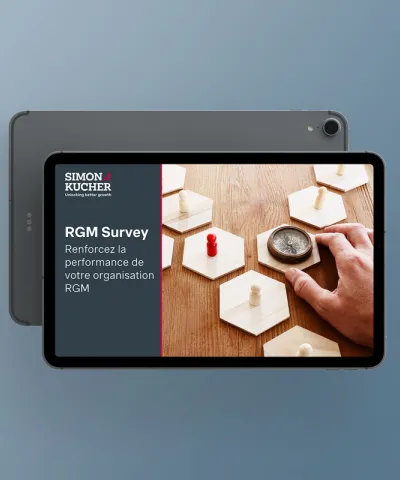Supply chain disruptions, rising energy costs, and increased consumer demand are driving inflation rates up to levels not seen in decades. However, even after months of increases, many companies are struggling to respond effectively to the situation. To learn more about their perspective, we undertook a global Inflation Pricing Study.
Consumer and energy prices continue to surge, keeping the inflation rate around the globe at a historic high: As the Organisation for Economic Co-operation and Development (OECD) reported on April 5th 2022, year-on-year inflation in the OECD area rose to 7.7 percent in February 2022, the highest they’ve been since December 1990. In comparison, reported rates were 7.2 percent in January 2022, and just 1.7 percent in February 2021. These number are expected to worsen, especially given the ongoing conflict in Ukraine and increased global volatility. Amid the uncertainty, the OECD estimates global economic growth will be more than 1 percentage point lower this year because of the conflict. Inflation, already high at the start of the year, could rise by a further 2.5 percentage points on aggregate across the world.
Study shows lack of strategic countermeasures
This is bad news for consumers and companies alike, who are all struggling with the situation. To find out more about the specific expectations and viewpoints of the latter, we surveyed more than 3,000 companies from across 20 countries in the Simon-Kucher Inflation Pricing Study.
What were the key results? Many companies are aware of the gravity of the situation: Roughly a third expect a cost increase of more than 6 percent at or above today's inflation level. And while the majority of decision-makers sees price increases as the most important measure to counter the cost increases caused by inflation, one third of all companies surveyed have neither implemented nor planned price increases and would therefore remain stuck with the costs.
The reason for that is the fear of excessive high-volume losses due to price increases – almost 70 percent admit to that. What they’re not realizing is, if they conduct their price increases with a clear objective and a differentiated approach, risks like these can be minimized. However, since roughly 30 percent of companies carry out price increases evenly (“the peanut butter spread approach”) across all customers and do not differentiate, there is still enormous potential for improvement.
9 steps to increase prices and offset price inflation
So how can companies prepare for price inflation, and improve their price increase capabilities? Given the typically low inflation levels over recent years, many companies stepped back from consistent investment in pricing excellence. This has come back to haunt them now, as an inefficient price increase process risks causing significant margin erosion. But how can companies increase their prices to offset inflation without breaking contracts, “waking the sleepers”, increasing churn, or damaging their reputation?
Are you interested in further insights about industry specific challenges regarding price inflation and price increases? Find out more!







